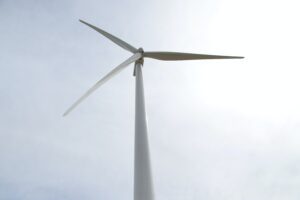Alberta 
Record-high regulated rate option could push Alberta power bills even higher
 Those paying the regulated rate option (RRO) will be facing down a rising default rate in August. It’ll result in an estimated average monthly bill add of $115, compared to those on a fixed rate. If approved by the Alberta Utilities Commission, the Enmax RRO for Calgarians will rise from 27.5 cents per kilowatt hour (kWh) in July to 31.9 cents next month. In Edmonton, that rate through Epcor could go as high as 32.5 cents. The rate is typically reserved for low-income earners or those with low credit who don’t qualify for a cheaper fixed rate. RRO prices in Alberta have been extra high because those customers are now repaying the $200 million deferral from the UCP government’s recent price cap. Consumer advocate Jim Wachowich believes it’s time to rethink — and maybe even re-regulate — the entire utility delivery system.
Those paying the regulated rate option (RRO) will be facing down a rising default rate in August. It’ll result in an estimated average monthly bill add of $115, compared to those on a fixed rate. If approved by the Alberta Utilities Commission, the Enmax RRO for Calgarians will rise from 27.5 cents per kilowatt hour (kWh) in July to 31.9 cents next month. In Edmonton, that rate through Epcor could go as high as 32.5 cents. The rate is typically reserved for low-income earners or those with low credit who don’t qualify for a cheaper fixed rate. RRO prices in Alberta have been extra high because those customers are now repaying the $200 million deferral from the UCP government’s recent price cap. Consumer advocate Jim Wachowich believes it’s time to rethink — and maybe even re-regulate — the entire utility delivery system.
Source: CTV News Calgary
Electricity Prices for Alberta
The Alberta power pool price averaged 15.500 cents per kWh in July 2023. This price is 2.941 cents lower than last month’s average of 18.441 cents. The pool price has averaged 18.534 cents per kWh over the last 12 months.
As of August 1, 2023, the forward market was predicting electricity prices for the calendar years of 2023, 2024, 2025, 2026, 2027, and 2028. These prices are 17.163, 9.542, 7.006, 7.500, 7.500, and 7.500 cents per kWh respectively.
Gas Prices for Alberta
Direct Energy’s gas rate for July 2023 was $2.273 per GJ in Alberta. The August 2023 rate has been set at $3.368 per GJ. Alberta gas prices have averaged $4.066 per GJ over the last 12 months.
As of August 1, 2023, the forward market was predicting gas prices for the calendar years of 2023, 2024, 2025, 2026, and 2027. These prices are 2.78, 3.04, 3.98, 4.17, and 4.03 cents per GJ respectively.
British Columbia 
Fortis B.C. asks Metro Vancouver to reject recommendations for a quicker move away from fossil fuels
Fortis B.C. is asking the Metro Vancouver board to reject calls for an accelerated move away from natural gas and to instead stick with existing timelines. These would include asking the province for legislation to quicken a transition away from natural gas and also renewable natural gas, which is produced from organic waste from farms, landfills, and water treatment plants. Both are products that Fortis B.C. sells.
In a recent letter to Metro chairman George Harvie, Fortis B.C. vice-president Doug Slater highlights one recommendation from Richmond. That recommendation is to ban the use of renewable natural gas and hydrogen fuels made from natural gas in new buildings, in order to meet greenhouse-gas limits and move more quickly to using electricity. Slater said banning gas from new buildings would limit choice for customers, decrease energy affordability and put more pressure on the electric system during peak times, especially during winter. He said giving customers more choice also makes them financially more able to support a long-term transition away from fossil fuels and gases.
A 2021 Metro report noted that one-quarter of all greenhouse-gas emissions in the region come from burning natural gas to heat and cool homes and buildings, produce hot water and for use in some household appliances. It said more than 90 per cent of emissions from apartments and houses, offices and industrial buildings, shops and schools are from the natural gas used to produce heat and heat water.
Source: Vancouver Sun
Ontario 
Ontario to seek new wind, solar power to help ease coming electricity supply crunch
 Ontario is working toward filling all of the province’s quickly growing electricity needs with emissions-free sources, including a plan to secure new renewable generation, but isn’t quite ready to commit to a moratorium on natural gas. Energy Minister Todd Smith announced Monday a strategy to prepare the grid for 2030 to 2050 — the Independent Electricity System Operator projects Ontario’s electricity demand could double by mid-century — and next steps involve looking for new wind, solar and hydroelectric power. The strategy also includes two nuclear projects announced last week — a new, large-scale nuclear plant at Bruce Power on the shore of Lake Huron and three new small modular reactors at the site of the Darlington nuclear plant east of Toronto.
Ontario is working toward filling all of the province’s quickly growing electricity needs with emissions-free sources, including a plan to secure new renewable generation, but isn’t quite ready to commit to a moratorium on natural gas. Energy Minister Todd Smith announced Monday a strategy to prepare the grid for 2030 to 2050 — the Independent Electricity System Operator projects Ontario’s electricity demand could double by mid-century — and next steps involve looking for new wind, solar and hydroelectric power. The strategy also includes two nuclear projects announced last week — a new, large-scale nuclear plant at Bruce Power on the shore of Lake Huron and three new small modular reactors at the site of the Darlington nuclear plant east of Toronto.
Those projects, enough to power six million homes, will help Ontario end its reliance on natural gas to generate electricity, said Smith, but committing to a moratorium in 2027 and eliminating natural gas by 2050 is contingent on the federal government helping to speed up the new nuclear facilities. The last round of procurements Smith announced for electricity generation involved both natural gas and battery storage projects. The new planned procurement of green power, including wind, solar, hydroelectric and biogas, will pair well with recent energy storage procurements, Smith said, so that power generated by solar panels, for example, can be stored and injected into the system when needed.
Source: Global News
Saskatchewan 
Bekevar Wind Project in Saskatchewan sees $50-million cash injection
The Government of Canada is contributing $50 million to the 200-MW Bekevar Wind Power Project, which is being delivered in partnership with the Cowessess First Nation and Innagreen Investments. Located south of Kipling, Sask., the project location includes turbines located on Cowessess First Nation land. The Bekevar project will consist of 36 turbines; an underground medium-voltage electrical collector system; access roads; a substation; two permanent meteorological towers; an operations and maintenance building; and a 10-km long transmission line to connect the project to the provincial grid. Federal funding comes from the $1.56-billion Smart Renewables and Electrification Pathways (SREP) program, which supports “smart renewable energy and electrical grid modernization projects”.
Source: Electrical Business
Manitoba 
Manitoba energy strategy includes wind power, time-of-day rates for electricity
 Manitoba is looking at boosting wind power and encouraging conservation – perhaps by charging customers different rates at peak hours – as part of a new long-term energy plan at Crown-owned Manitoba Hydro. The province needs to at least double, and possibly triple, its current hydroelectric generating capacity of 6,600 megawatts by 2050. Major industries are investing in the province because of its clean and inexpensive electricity; Manitoba has among the lowest rates in North America, behind Quebec. The growing use of electric vehicles is also expected to drive up demand. However, with the utility already dealing with high debt loads — recent construction of two dams and a massive transmission line helped triple the utility’s debt over a 15-year period — the utility is looking to wind power to build capacity. The utility is also looking for ways to encourage people to shift some of their electricity use away from peak hours. That could include using smart meters to charge people higher rates at peak times and lower rates on evenings and weekends.
Manitoba is looking at boosting wind power and encouraging conservation – perhaps by charging customers different rates at peak hours – as part of a new long-term energy plan at Crown-owned Manitoba Hydro. The province needs to at least double, and possibly triple, its current hydroelectric generating capacity of 6,600 megawatts by 2050. Major industries are investing in the province because of its clean and inexpensive electricity; Manitoba has among the lowest rates in North America, behind Quebec. The growing use of electric vehicles is also expected to drive up demand. However, with the utility already dealing with high debt loads — recent construction of two dams and a massive transmission line helped triple the utility’s debt over a 15-year period — the utility is looking to wind power to build capacity. The utility is also looking for ways to encourage people to shift some of their electricity use away from peak hours. That could include using smart meters to charge people higher rates at peak times and lower rates on evenings and weekends.
Source: CTV News Winnipeg
New Brunswick 
Higgs says 2022 law change not meant to benefit oil companies ‘at all’
Following the implementation of the carbon tax on July 1 and the introduction of new clean fuel regulations on July 7, gas in the port city now averages $1.70, is still cheaper than the provincial maximum of $1.74. The price jump is as expected with the New Brunswick’s Energy and Utilities Board new clean fuel regulations carbon adjuster of 6.17 cents on gasoline plus another 0.93 cents of HST on the adjuster, a total jump of over seven cents. The remaining two cent increase consumers in New Brunswick saw Friday would come from the benchmark market price of the product.
The good news is Maritimers shouldn’t expect another massive jump like they have the past two weeks. Robichaud says prices will vary by a few cents week in and week out, which is nothing new for those living in this part of the country. While the clean fuel regulations are imposed by the federal government, the New Brunswick government changed legislation in December 2022 to pass the extra cost to consumers. The statement cites a potentially devastating impact on small family-owned gas stations. Carbon tax credits are set to come to oil companies to help invest in environmentally friendly improvements. Higgs notes those credits have yet to be available to New Brunswick refiners, who he says are second to none already in Canada when it comes to cleaner practices.
Source: CTV News Atlantic
Prince Edward Island 
18 groups receive funding to battle climate change
Islanders are hard at work coming up with innovative ideas to adapt, mitigate and raise awareness about climate change, with help from provincial funding. The Climate Challenge Fund has provided $1 million annually to help organizations develop innovative solutions to address climate change, including funding for 18 new projects this year. The goal of the Climate Challenge Fund is to empower people of different backgrounds, experiences, and expertise, who work across sectors and in different communities throughout the Island, to contribute to climate action in any or all of the following areas: adapting to projected impacts of climate change; reducing greenhouse gas emissions; increasing opportunities for carbon sequestration (the removal and storage of carbon dioxide from the atmosphere); building capacity and resilience through public outreach and education; and/or expanding climate change research and knowledge. The Climate Challenge Fund has supported 43 projects prior to 2023, for a total of over $3.3 million across sectors and organization types, including First Nations, municipalities, nonprofit organizations, local businesses, and academic institutions.
Source: Prince Edward Island
Québec 
Quebec should increase electricity rates, says Montreal think tank
 Quebec would have a better chance of improving its energy efficiency by increasing electricity rates rather than maintaining its current programs, argues the Montreal Economic Institute (MEI). The proposal is one of the recommendations made by the think-tank associated with the economic right as part of the consultations conducted by the Ministry of Energy on the framework and development of clean energy.
Quebec would have a better chance of improving its energy efficiency by increasing electricity rates rather than maintaining its current programs, argues the Montreal Economic Institute (MEI). The proposal is one of the recommendations made by the think-tank associated with the economic right as part of the consultations conducted by the Ministry of Energy on the framework and development of clean energy.
Quebecers are relatively greedy when it comes to electricity consumption, where rates are lower than the North American average. The Legault government, which had decided to link rate changes to the consumer price index (CPI), had to backtrack in 2022 and cap the increase because of the exceptional surge in inflation and the discontent that a 5 per cent rate rise would have caused. Higher rates to encourage households and businesses to be more energy efficient would, however, be necessary at a time when Hydro-Québec is considering the end of surpluses and the cost of new supplies will be higher than the heritage block.
In its brief, the MEI also reiterated the recommendation it made earlier in July in a report to open up the market more to private producers. In particular, it suggests allowing producers to sell directly to businesses and raising the 50 MW ceiling imposed on private hydroelectric dams. The organization also restated its support for natural gas because replacing this energy source would put greater pressure on Hydro-Québec’s network. The MEI is also calling for the ban on hydrocarbon production in Quebec to be lifted, a proposal criticized by environmental groups who believe that such a decision would delay the necessary energy transition.
Source: CTV News Montreal
Newfoundland and Labrador 
Wind-to-hydrogen projects still in play across Newfoundland, as list gets whittled to 9
There are now nine companies with a chance to build green hydrogen projects on Crown land in Newfoundland and Labrador. While the department is not naming the companies, CBC News has been able to verify eight of the nine and where their plans are located. They are: Pattern Energy at the Port of Argentia; Brookfield Renewable Partners in Placentia Bay; ABO Wind in Come by Chance; North Atlantic in Come by Chance; Everwind Fuels on the Burin Peninsula; Exploits Valley Renewable Corporation in central Newfoundland; World Energy GH2 on the southwest coast of Newfoundland; Fortescue Future Industries on the southwest coast of Newfoundland.
With Everwind Fuels moving on to the next round, the vast majority of the Burin Peninsula is still in play. The company has plans for more than two gigawatts of wind energy, along with the potential to build wind farms offshore. If approved, it’s expected to break ground next year and employ as many as 5,000 people during construction. Companies with wind generation over one megawatt will have to go through an environmental assessment and the companies themselves will have to make a final investment decision once all approvals are in place.
Source: CBC
Nova Scotia 
NS Power plans to produce electricity with fuel oil until 2050 instead of with coal
Nova Scotia’s power utility plans to convert a coal-burning electricity station in Cape Breton to burn heavy fuel oil once federal regulations phase out coal entirely in 2030. The proposal has raised the eyebrows of one utility review board member and was characterized as “disturbing” by a climate policy expert. Documents filed by Nova Scotia Power show that three of four coal-fired units at the Lingan Generating Station will be converted to heavy fuel oil in 2030 and are scheduled to operate until 2050. In 2016, the federal government announced coal would be entirely phased out by 2030, a move estimated to reduce greenhouse-gas emissions by nearly 100 million tonnes over the following two decades.
David Pickles, chief operating officer of the privately owned utility, said that it would be less expensive to produce electricity with oil than to replace its coal-burning generating station, as the Cape Breton station already has the capacity to run on oil. The emissions from coal and heavy fuel oil were comparable, he added, but the facility has “a really low utilization rate” and is usually only used to generate reserve electricity during the coldest days of winter. Jacqueline Foster, a spokesperson for Nova Scotia Power, said in an email that the electric utility is committed to helping the government reach the goal of having 80 per cent of the province’s energy by 2030 come from renewables. Emissions from heavy fuel oil would be low and not impact the province’s targets — which have been enshrined into law — because the Lingan coal-fired units would only be used in “limited situations.”
Source: City News Halifax
Nunavut 
QEC decommissions fuel system at Arctic Bay’s old power plant
The fuel system at the old power plant is being decommissioned because it is no longer being used, Qulliq Energy Corp. spokesperson Bibi Bilodeau said. Environment and Climate Change Canada regulations require that all storage tank systems and their components be safely removed once they are permanently withdrawn from service. The new power plant in Arctic Bay is active and was fully commissioned on Dec 21, 2021. If the old fuel tank passes an American Petroleum Institute inspection, it will be repurposed, Bilodeau said. All other useful components from the old power plant will also be repurposed.
Source: Nunatsiaq News
Northwest Territories 
NWT revisits emissions reduction target
 The territorial government is seeking input on its approach to energy and greenhouse gas emissions, including whether it should revise its emissions reduction target. In 2018, when the GNWT launched its current energy and climate change strategies, the territory committed to reducing greenhouse gas emissions by 30 percent below 2005 levels by 2030. Since then, a lot has changed. Leading up to its five-year review, the GNWT asked consulting firm Navius Research to conduct a study exploring various emissions scenarios. The aim of the study was to better understand what different low-carbon futures might look like, assess the gap between emissions targets and trajectories based on existing policies, and identify the most efficient ways to meet those targets.
The territorial government is seeking input on its approach to energy and greenhouse gas emissions, including whether it should revise its emissions reduction target. In 2018, when the GNWT launched its current energy and climate change strategies, the territory committed to reducing greenhouse gas emissions by 30 percent below 2005 levels by 2030. Since then, a lot has changed. Leading up to its five-year review, the GNWT asked consulting firm Navius Research to conduct a study exploring various emissions scenarios. The aim of the study was to better understand what different low-carbon futures might look like, assess the gap between emissions targets and trajectories based on existing policies, and identify the most efficient ways to meet those targets.
Robert Sexton, director of energy for the NWT’s Department of Infrastructure, said there have been discussions about upping the 2030 target to a 45-percent reduction compared to 2005 levels, or targeting net-zero by 2050. Reaching a 45-percent decline in emissions would require additional effort and reaching net-zero would require “strong policy,” the study concluded.
Source: Cabin Radio
Yukon 
Tripped hydro unit knocks out half of electricity generated in summer: Yukon Energy Corporation
A tripped hydro unit in Whitehorse led to the loss of roughly half of the electricity Yukon Energy Corporation usually generates in the summer. On July 6, a short-lived outage lasted around 45 minutes but involved the loss of 20 megawatts of electricity, communications manager Lisa Wiklund said. The energy corporation used diesel and liquefied natural gas to make up electricity that was previously being generated by the hydro unit. Yukon Energy Corporation generates and transmits electricity in the Yukon, then sells it wholesale to ATCO Electric Yukon, which distributes it.
Source: Yukon News